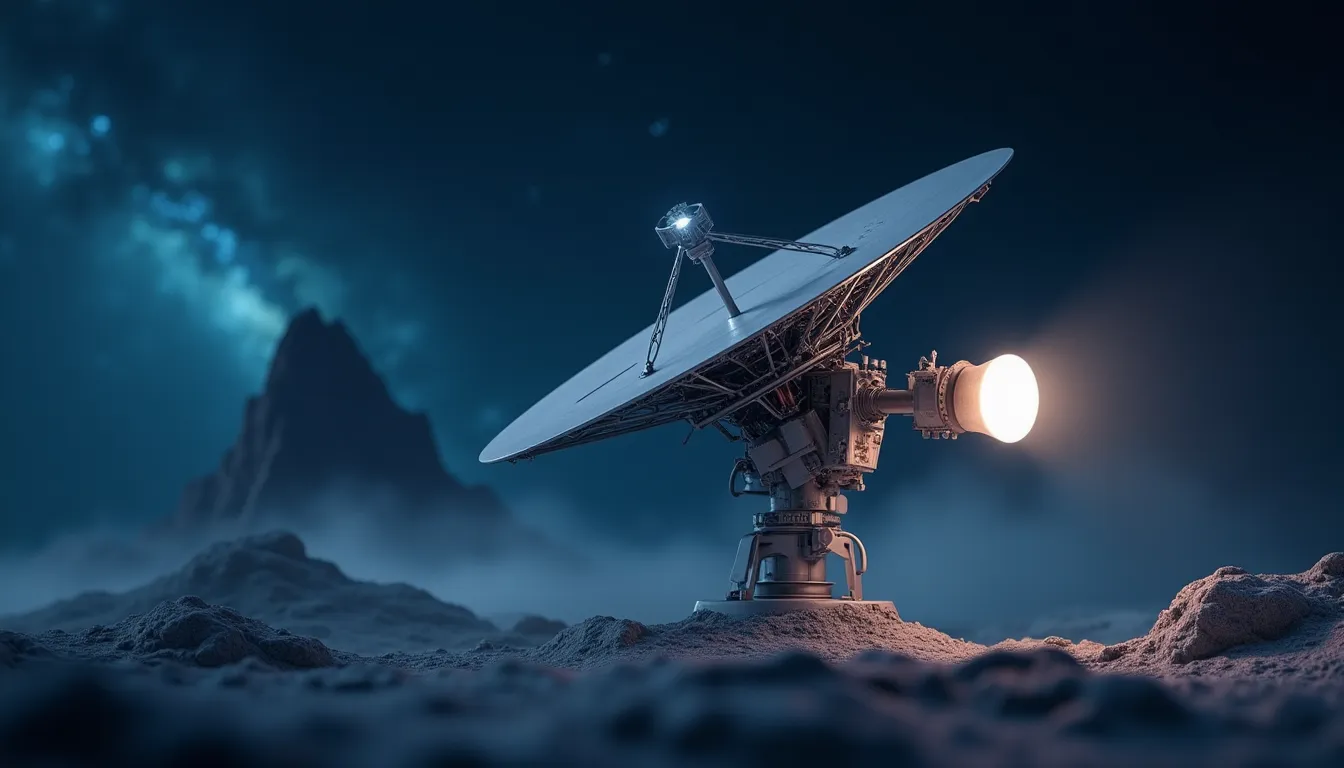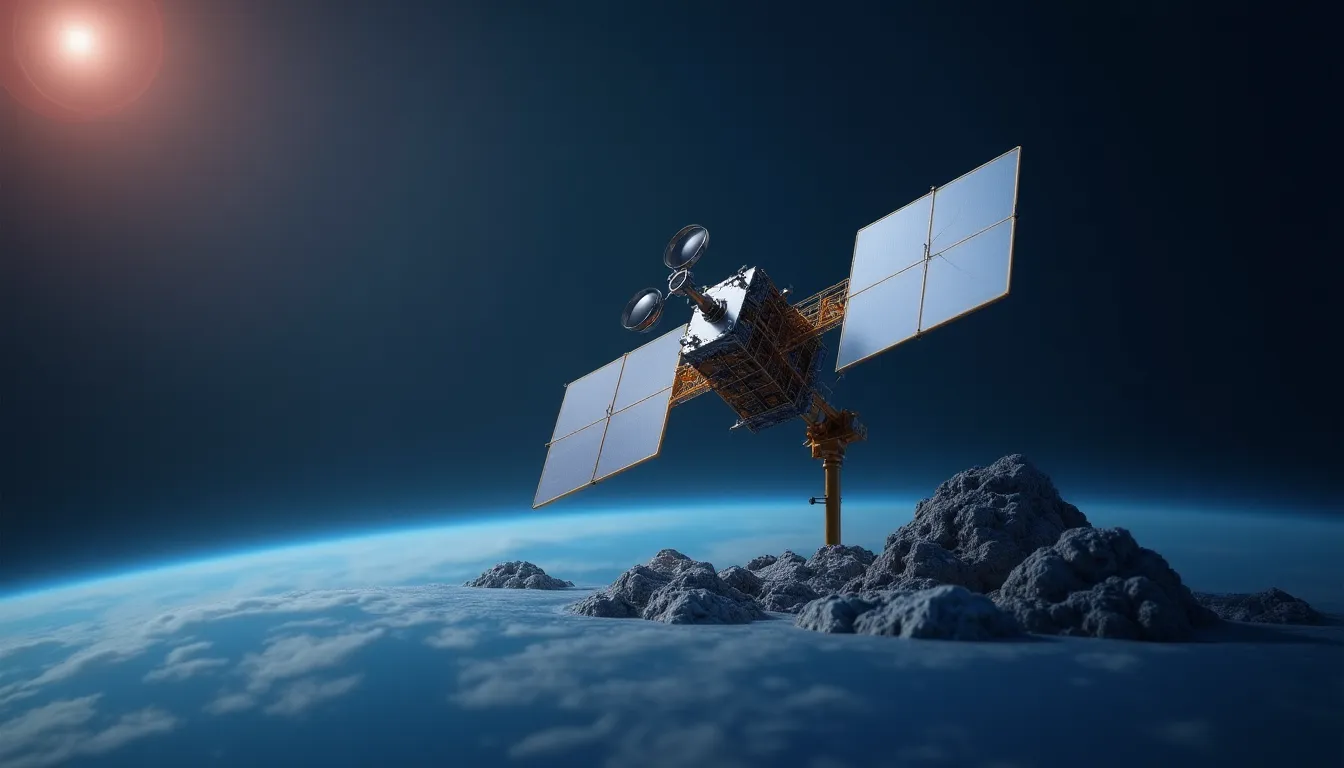The satellite sector is experiencing rapid advancements across various disciplines, including meteorology, space communications, and defense. Recent developments over the last month have underscored the importance of satellite technology in addressing climate change, enhancing global connectivity, and supporting space exploration initiatives. This article explores some key highlights and innovations that are shaping the future of the aerospace and defense industry.
China’s Launch of the Fenyun-3H Meteorological Satellite
On September 25, 2025, China successfully launched the Fenyun-3H meteorological satellite, a significant enhancement in global climate monitoring capabilities. This satellite is equipped with nine advanced payloads, including the Greenhouse-gases Absorption Spectrometer II (GAS-II), which stands out as the first of its kind capable of performing global greenhouse gas monitoring with a 100 km swath width. This allows for unprecedented data collection on atmospheric composition and pollution levels.
The Fenyun-3H also features the Wide-field Auroral Imager-II (WAI-II), designed for real-time aurora monitoring and space weather forecasting, thus contributing to a more comprehensive understanding of Earth’s atmospheric dynamics. The satellite promises to deliver 70 distinct products across various categories such as cloud radiation, sea and land surface monitoring, and atmospheric parameters, which will greatly enhance numerical weather prediction and disaster mitigation efforts.
Advancements in Space Communications by NIST
The National Institute of Standards and Technology (NIST) is making strides in the realm of space communications, focusing on standards and measurement science critical for the next generation of satellite systems. As Low-Earth Orbit (LEO) satellites and CubeSats become increasingly prevalent, NIST’s work on spectrum measurement, antenna metrology, and timing calibration is essential for ensuring reliable, precise, and interoperable satellite systems.
This initiative is particularly relevant as the demand for secure global connectivity and reliable satellite communications grows. The advances by NIST position the U.S. to maintain its leadership in space communications, especially as satellite constellations multiply and evolve to meet the needs of weather forecasting and disaster response.
U.S. Space Force’s Evolving Satellite Acquisition Strategy
In a bid to adapt to the evolving landscape of space technology, the U.S. Space Force is shifting its acquisition strategy from traditional, large, and expensive satellites to a more agile model involving proliferated Low Earth Orbit (pLEO) constellations. This change embraces an iterative development approach, focusing on smaller minimum viable products (MVPs) that can be rapidly deployed and upgraded.
This new strategy not only allows for quicker technological refreshes—potentially every few months—but also encourages participation from a diverse ecosystem of satellite providers, including small businesses. This shift fosters a more dynamic and competitive environment, ultimately enhancing national defense capabilities in space.
NASA’s Development of High-Fidelity Fluxgate Magnetometers
In support of space science and weather missions, a NASA-sponsored team at the University of Iowa has made significant advancements in fluxgate magnetometer technology. The newly designed SWIM (Space Weather Instrumentation Module) utilizes digital demodulation and temperature-compensated pulse-width modulation to enhance performance in high-radiation environments. These advancements are crucial for long-duration space missions, including those focused on radiation belt studies and planetary exploration.
Planet Labs Opens New Satellite Manufacturing Facility in Berlin
On September 29, 2025, Planet Labs announced the opening of a new manufacturing facility in Berlin dedicated to producing next-generation Pelican satellites. This facility represents a substantial investment in the European space sector, aiming to bolster the region’s capacity for high-resolution Earth observation. The new facility will create skilled jobs and strengthen the European supply chain, emphasizing the strategic importance of Earth observation satellites for security, crisis response, and technological sovereignty.
ESA’s HydroGNSS Satellite Ready for Launch
The European Space Agency (ESA) is preparing for the launch of its HydroGNSS satellite, part of the FutureEO program. This satellite is designed to monitor critical hydrological parameters related to the Earth’s water cycle, including soil moisture, wetland monitoring, and freeze/thaw states. By contributing valuable data for climate change studies and environmental monitoring, HydroGNSS will enhance our understanding of global water resources and their management.
Conclusion
The recent advancements in satellite technology reflect a transformative period for the aerospace and defense industry. With innovations such as the Fenyun-3H satellite, NIST’s communication standards, and the U.S. Space Force’s agile acquisition strategies, the landscape of satellite capabilities is rapidly evolving. As countries invest in satellite manufacturing and new technologies, the future looks promising for enhanced global connectivity, climate monitoring, and space exploration. These developments not only demonstrate the critical role of satellites in addressing contemporary challenges but also pave the way for a more interconnected and informed world.
References
-
China launches Fenyun-3H meteorological satellite to boost global … (www.meteorologicaltechnologyinternational.com) - 9/30/2025 China launches Fenyun-3H meteorological satellite to boost global climate monitoring and weather forecasting. Alex Pack By Alex Pack September …
-
The Fine Art of Contracting Adapts to a Changing Space Acquisition … (www.ssc.spaceforce.mil) - 9/30/2025 This is a news update from Space Systems Command. The Fine Art of Contracting Adapts to a Changing Space Acquisition Ecosystem. Published Sept …
-
Making High Fidelity Fluxgate Cores for Space … - NASA Science (science.nasa.gov) - 9/30/2025 A NASA-sponsored team at the University of Iowa (UI) is restoring and advancing the nation’s capability to make high-fidelity magnetic field …
-
Planet to open Berlin satellite manufacturing facility providing next … (news.satnews.com) - 9/30/2025 Planet to open Berlin satellite manufacturing facility providing next-gen, high-res Pelican sats. September 29, 2025. Share. Share on Facebook.
-
ESA’s first HydroGNSS satellite preps for launch - GPS World (www.gpsworld.com) - 9/30/2025 The European Space Agency’s (ESA’s) HydroGNSS mission will investigate the Earth’s water cycle, has landed in California and is ready to start …
-
Astroscale + HEO advance space monitoring capabilities for allied … (news.satnews.com) - 9/30/2025 Australian technology is at the core of this effort, powering satellite inspection solutions that contribute directly to allied SDA strategies.
-
International Space Station: Launching NASA and Humanity into … (www.nasa.gov) - 9/30/2025 In November 2025, NASA and its international partners will surpass 25 years of continuous human presence aboard the International Space Station.
-
Advancing Space Communications at NIST Communications … (www.nist.gov) - 9/16/2025 Advances in space technologies, such as the use of Low-Earth Orbit (LEO) and compact CubeSats are expected to continue to evolve and become more …



